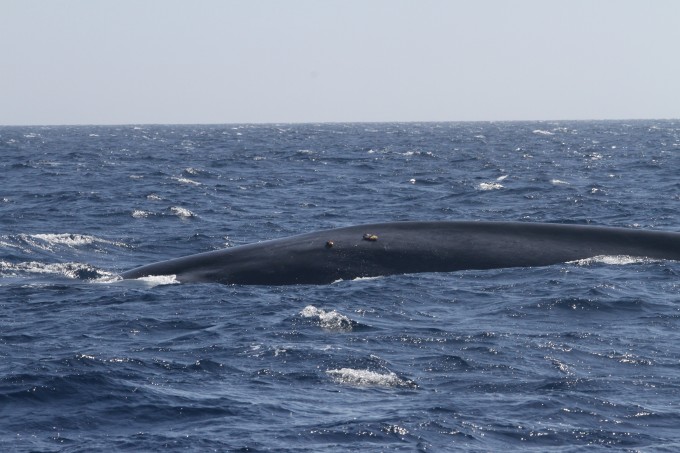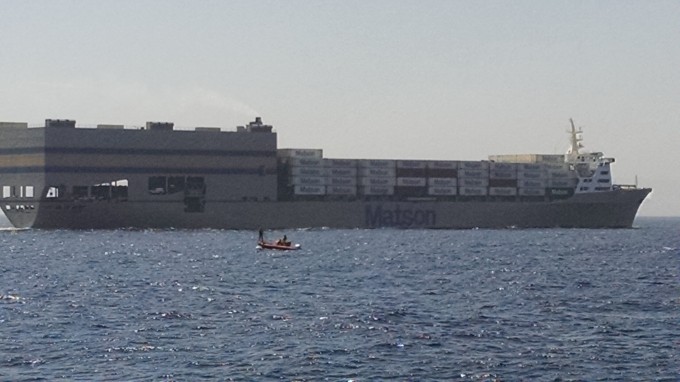Though we had planned on working nearshore today in SOCAL-BRS with some planned refueling and transfers of people and gear, the small craft advisory from large swell and 20+ knot winds in outer water ensured it. Knowing the weather would be poor we got an early start with the objective of getting a baleen whale tagged before the high winds made their way inshore. We worked out from San Pedro near LA and found several blue whales feeding along the shelf break south of Palos Verdes peninsula. This is a very common area for feeding baleen whales, though it overlaps with some of the main shipping lanes on the U.S. west coast. We attached two different acoustic and movement tags (a WHOI DTAG and a Mark-10 TDR – please see the detailed information and summary at www.socal-brs.org for more details on these sensors). Both of these tags are visible in the picture below (taken under NMFS permit #14534-2 by C. Casey) on the whale from today (who is still carrying both tags as of 2300 PDT!). This combination allows us to measure high resolution diving behavior, broadband sound, and GPS position in a complimentary way, which is accompanied by visual focal follow sampling of individual behavior.

After the controlled sound exposure experiment (fortunately) our tagged whale had a close interaction with a large commercial vessel in the shipping lanes in the San Pedro Channel. Below is a photo of the vessel with our tagging and focal follow small boat in the foreground – obviously it is the small boat in this interaction.

The whale came within just a few hundred meters of this vessel and based on the track and where the animal surfaced (about 100 meters on the other side of the track about a minute after it passed) we believe it went directly below it. John Calambokidis of Cascadia Research Collective has been leading some pioneering research and conservation efforts on the serious issues related to whales and the threats posed by ship strikes out here on the west coast. Please go to <www.cascadiaresearch.org> for much more information on these issues and on some of the innovative new technologies and measures being taken to try and understand and mitigate these risks.
